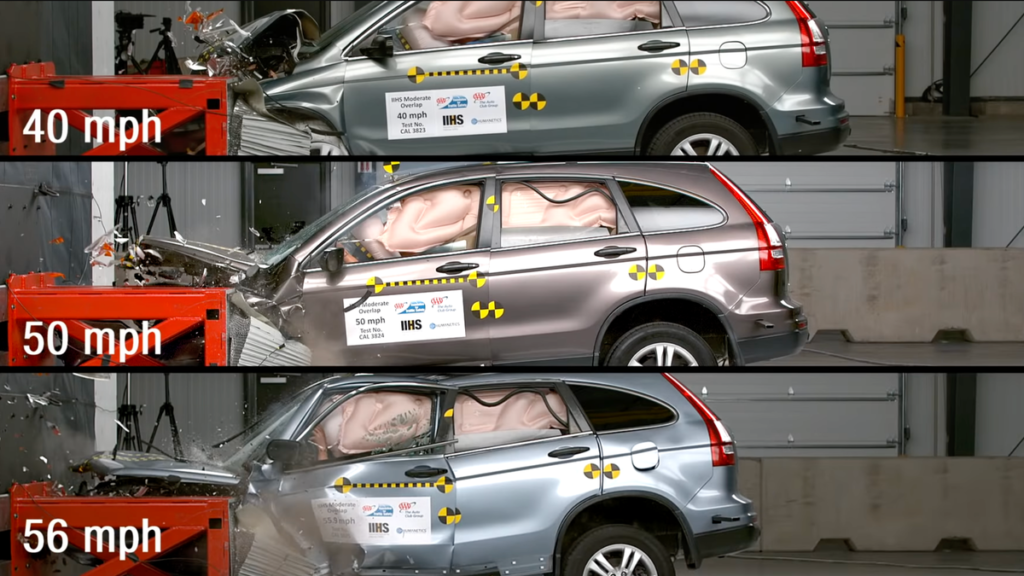Going Fast Is Fun, But Watch What Happens When It All Goes Wrong

We all love driving fast, but watching the cold hard reality imposed on us all by The Laws Of Physics might make you think twice before speeding.
Forget Autonomy, Drivers Still Want Control
The Insurance Institute for Highway Safety or IIHS is an independent agency that holds automakers publicly accountable for the safety of their cars. The tests performed in this video focus on an older car, but the average car on the road today is 12.5 years old according to S&P Global Mobility, so this 2010 CR-V represents the average car.
This test was performed a few years ago but we just came across it and felt that it was pertinent especially now that some governmental entities are proposing speed limiters on passenger cars to reduce fatality rates. This test demonstrates the significant decline in a car’s crash worthiness as speeds gradually increase from 40 to 50 and finally 56 miles per hour.
New crash tests show modest speed increases can have deadly consequences – IIHS News
At 40 miles per hour, the CR-V holds up well, maintaining enough space for the driver to likely walk away from the impact. As speeds increase to 50 miles per hour, more structural deformation occurs, especially as the entire dashboard begins to push back into the cabin, and the dummy’s knees are scrunched up. At 56 miles per hour, things get gnarly. The CR-V’s safety cage collapses as shown by the A-pillar’s collapse, and the entire dashboard pushing up and back into the passenger’s survival space.
The IIHS performs its original crash test, the moderate-overlap crash test at 40 miles per hour, and the 2010 Honda CR-V received the IIHS’ highest rating of Good in this test. Readings from the dummy after the 40 mph impact indicate minimal injuries.
At 50 miles per hour, intrusion into the cabin increased, as did the likelihood of driver injury. At the highest speed of 56 miles per hour, the dummy experienced significant forces that indicate likely facial, brain, neck, and lower-leg injuries.
Screenshot: IIHS/ YouTube
All three of these crash tests were all performed below the speed limit on most American highways. Most highways have 65 or 70 miles per hour speed limits, and some states have up-to 85 miles per hour speed limits. Given the rapid decreases in occupant safety with nominal speed increases, an accident like this at highway speeds would not end well for anyone on-board.
It should be noted that the likelihood of going from highway speeds to a dead stop are low, but side streets are often traveled at similar speeds to the examples shown in this IIHS test, and it’s likely to encounter parked cars and cross-traffic on these roads. According to IIHS data, more than a quarter of all traffic fatalities were attributed to excessive speed in 2021.







